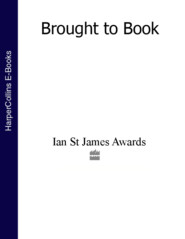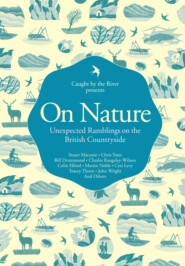По всем вопросам обращайтесь на: info@litportal.ru
(©) 2003-2025.
✖
In God’s Hands: The Spiritual Diaries of Pope St John Paul II
Автор
Год написания книги
2019
Настройки чтения
Размер шрифта
Высота строк
Поля
The structure of creation as free givenness (out of nothing) and the dynamism which follows from this allow us to introduce an evolutionary theme (creation is immanently directed towards fullness) into our considerations of the mystery.
First and foremost, however, the entire dynamism of creation (cf. Genesis 1–3) allows us to see in it a kind of pouring out of the love with which the Father has eternally embraced the Son–Word. ‘Without Him was not anything made that was made.’
The mystery of creation has a Trinitarian character and, in a further perspective, a Christological character: ‘the God and Father of our Lord Jesus Christ’.
The omnipotent Father creates ‘through Him and with Him and in Him’ – in order to make the entire creation, above all man, ‘through Him and with Him and in Him’ – ‘return’ to the Father.
The Way of the Cross – the Trinitarian and Christological dimensions
Terce; Sext; None; Reading etc., Rosary; Vespers
Adoration of the Blessed Sacrament: Jesus is present and acts: let me not waste any word nor any inspiration of the Holy Spirit
Meditation 6: The pride of life is not of the Father, but of the world (BT translation),
and the world passes away, and the lust of it; but he who does the will of God abides for ever.
Reflection: (a) petition for a proper discernment of specific problems in the spirit of humility, i.e. the spirit of truth and generosity; (b) petition for fidelity to an established formula (in relation to the so-called drive for importance): to desire only the significance which will be given to me by God Himself – and work with Him; and finally (c) not to resign from the highest ‘ambition’, which is the desire for sanctity.
Reading; Anticipated Matins of the following day (Feast of Ss Cyril and Methodius); Rosary
Concluding meditation of the day [Meditation 7]: Mary stands in the middle of the dynamism of creation: full of grace. Together with Her I try to resolve issues like (a) and (b). My ‘ambition’ of sanctity is also connected to Her: Totus Tuus.
Reading (the encyclical on joy); Compline
7 July: Feast of Ss Cyril and Methodius
Morning prayers
The beginning of the daily meditation: before the face of God Himself, creation – fulfilment
Lauds; Holy Mass (Eucharistic prayer 4); Thanksgiving
Reading: Kim jest dla mnie Jezus Chrystus
– Analecta Cracoviensia
Meditation 8: The dynamism of creation leads to fulfilment. Precisely because creation is the gift of the Creator, it has to have a final sense in His own plan (providence). It is related to purposefulness. Creation is fulfilled constantly on the level of ‘nature’ among creatures deprived of transcendence. Fulfilment consists in them being alive, their existence as species, their evolution. Their fulfilment belongs to the ‘world’; and from the Creator’s perspective, this fulfilment consists in the fact that all those creatures, and through them the entire world, express His presence, His wisdom and His power ‘externally’, in a way outside of God.
The relationship between creation and fulfilment is different for beings endowed with transcendence. This is man in the visible world (and, apart from it, the world of pure spirits). The fulfilment of man is immanently linked to judgement. For judgement is an act of transcendence. It is realised in the voices of conscience, and there has to be finally a kind of synthesising judgement. In this judgement, man–conscience meets God–Just Judge. The judgement equates transcendence ‘towards truth’. However, it consists in arriving at the truth about love (‘in the evening of your life you will be judged by your love’) and the truth for love.
For man is called to fulfilment through participation in God, who is love. God–Trinity is the self-contained fullness, above all fulfilment of the world and the human heart. At the same time, this fullness outlines the horizon of fulfilment for all creation in the human being. At the end of his life, man will be judged by the ways in which he served the fulfilment of the world, whose transcendent end is God as fullness. This fulfilment finds its realisation in the partaking of God, which will lead to God being all in everything. The foundation of this fulfilment is not personal transcendence, but grace, which ingrains the participation in God’s life, which is fullness, in this transcendence.
(Many themes are still to be developed here).
The Way of the Cross; Terce; Sext; None
In the afternoon we enter the final stage of the retreat (rest, reading)
Adoration of the Blessed Sacrament: Joyful conviction that Christ is, and giving thanks for that, and a fervent petition for Him to be with me in everything that I wish to root in Him and develop with Him – despite all my weakness and even though ‘conscientia metuit’ [‘the conscience is anxious’]: so that He Himself develops properly good things beyond my weakness and clumsiness.
Meditation 9: Reference to specific issues – and once again to 1 John on the triple concupiscence, which is ‘of the world’. The lust of the eyes may take the form of not only desire for material goods, but also for any visible success achieved to fulfil one’s self-love in any area. Hence, one needs to look at facts critically.
The triple concupiscence impedes creation’s way to fulfilment. If we follow different impulses, reactions, feelings, sometimes it is difficult to discern and draw boundaries. Christ the Lord gave us one method and taught us one attitude, which seems to constitute the simplest remedy for the triple concupiscence. It is the attitude and method of service. One has to follow it, cutting across the entire complicated field of inner tensions, which are born of the lust of the eyes, the flesh and the pride of life.
Anticipated Matins of the following day (Feast of St Elisabeth); Reading and letters; Penitential psalms; Litany of the Saints; Rosary
Concluding meditation [Meditation 10]: Mary took the path from creation to fulfilment in the simplest and quickest way. This is how Her response at the Annunciation can be translated: I am the handmaid of the Lord. The attitude of service emerges spontaneously, surpassing the area of the triple concupiscence so common to man. Therefore She is – as Vatican II reminds us – the fulfilment of what the entire people of God in the Church strive for. One needs to learn from her the simplest – and at the same time most deeply grounded – resolution.
Compline; Reading
8 July
The conclusion of the retreat takes place at Kalwaria Zebrzydowska.
The Little Ways of Our Lady;
Rosary
Meditation 11: On these paths the people of God often reflect on the mystery of the creation and fulfilment, bringing together Christ and Mary in their hearts.
I also come here to bring my retreat intentions to their hearts and ask for the grace of little fulfilments on the way to the highest fulfilment.
Holy Mass in the Sacred Chapel before the Miraculous Image
(In the afternoon: the funeral of Prelate Stanisław Słonka in Żywiec-Zabłocie)
21–26 September 1976 (#ulink_af0a7b8d-a53b-548b-930f-0bd0cc3d144f) Retreat in Zakopane–Jaszczurówka at the Grey Ursulines’ Topic: Sacerdos – Propheta – Rex [Priest – Prophet – King]
21 September: Feast of St Matthew
Vespers at 4.30 p.m.
Introductory meditation: Fr W. spoke in the morning about ‘the vocation of the sinner’ – this is what he said about today’s patron saint. Every vocation is threefold and consists of the dimensions of the priest, the prophet and the king. Matthew’s calling to join the twelve apostles was also like that. We will try to follow this threefold nature of vocation during the retreat. And every vocation through Christ–Just Lamb is the calling of a ‘sinner’. It contains an inner dimension of ‘justification’ proportionate to the dimension of sinfulness. We will also try to follow up on this during the retreat. The first light.
Вы ознакомились с фрагментом книги.
Приобретайте полный текст книги у нашего партнера:
Приобретайте полный текст книги у нашего партнера:











